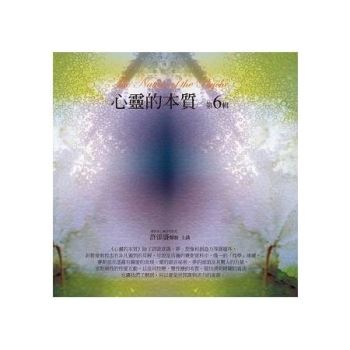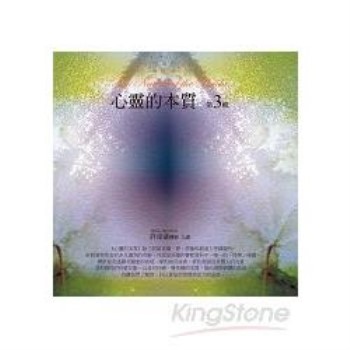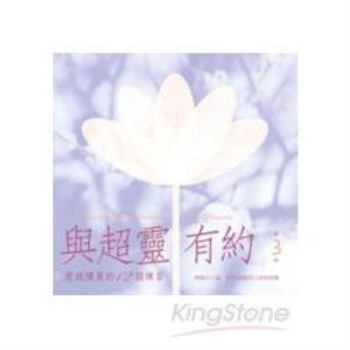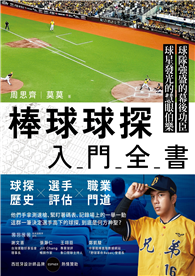圖書名稱:Riding the Solar Wave: The Life and Times of Dr. Simon Tsuo
A solar PV energy scientist at America’s premiere National Renewable Energy Laboratory and the pioneering CEO of Motech Solar, Dr. Simon Tsuo led an exciting life while discovering the innovative crystalline silicon technology that is responsible for much of the world’s current solar energy resources. This book tells the tales of Tsuo’s rediscovery of his roots in a transforming Taiwan, entrepreneurialism, business strategies, and the rise of the solar sector and the green economy.
* * * * *
Dr. Simon Tsuo was born in China in 1948 just one year before the conclusion of its civil war, in which his father led more than 4,000 men on the nationalist (KMT) side. After the KMT’s defeat in the Chinese Civil War and his family’s fleeing on a seized tanker boat, Dr. Tsuo grew up under its exiled “one party state” in Taiwan. There, he learned to navigate the Taiwan of his youth, and like many of the post-war generation, he excelled academically in order to qualify for further opportunities in America.
After a cultural journey of American exploration, Dr. Tsuo attained a PhD in applied physics which led him to a successful career at the National Renewable Energy Laboratory, America’s only federal government renewable research institute. There, he delved into a 20 year-long research path during solar energy’s “warring technologies period,” through which he became convinced that crystalline silicon was to become the leading technology. With this insight, Dr. Tsuo eventually returned to Taiwan to establish Motech Solar as one of the world’s first crystalline silicon-only solar cell firms. With a visionary strategy, Dr. Tsuo overcame many challenges to lead Motech Solar to become a global sector leader, which spawned Taiwan’s solar sector.
作者簡介:
Jasper Green
Prior to writing this book, I had just completed my PhD at the University of Sussex on post-WWII China-Taiwan relations, economic integration, and the political implications thereof. Before my studies in the field of Global Political Economy for my master’s degree onward, I pursued an undergraduate degree in the humanities which together have provided me with the necessary conceptual frame to complete this book.
Being at home in both Eastern and Western culture, as well as fluent in Chinese and English, it was after interviewing Simon for my PhD thesis that he approached me to write his biography in both English and Chinese. Moved by the subject matter, I accepted the task to embark upon crafting the narrative of Dr. Tsuo’s life, as it had been shaped by the current of the times and how he, in turn, came to leave his mark on the world.
作者序
Preface
The Enduring Legacy of Dr. Simon Tsuo
Technological innovations which have a significant societal impact appear to have three major common characteristics. First, there is a recognized societal need that is well-documented and understood, and one or more visionaries who have the courage to undertake the mission to address the need. Second, there are technical innovations or revolutionary advances that need to be implemented and reduced to practice. Third, the visionary must have the right combination of technical, business, and human skills, as well as the ability to relentlessly pursue the goal of overcoming obstacles and making the change. Dr. Yuan-huai Zuo— or Dr. Simon Tsuo as he was known to us in the United States and the world outside of Taiwan and China—was one of these visionaries who demonstrated these characteristics. As chronicled in this book, he has led the way in introducing low-cost solar electricity which is currently cost-competitive with conventional electricity generation in most of the developing and developed world.
The need for clean energy has been well-argued and documented for the past half century and longer. With growing world populations, and the insatiable need for more energy (and electricity), especially in developing countries, along with the growing recognition that fossil-fuel- based energy supplies are causing irreversible harm to our environment, the search for alternative clean energy supplies has occupied the minds of scientists for many decades. The motivation for change was accelerated by the oil crises of the early 1970s, along with the documentation of global climate change and its relationship to human activities and the burning of fossil fuels during the decades since then. Solar energy was clearly seen as the inevitable option for clean, renewable, and inexhaustible energy supply—the amount of solar energy reaching the Earth in just one hour
is more than the total energy all of humanity uses on Earth over an entire year. Dr. Simon Tsuo joined this quest for clean energy toward the end of the 1970s when he received his Ph.D. degree and joined the Solar Energy Research Institute (now the National Renewable Energy Laboratory) in Golden, Colorado. It was a privilege for me to welcome Simon to this world-leading solar energy laboratory in 1980.
Dr. Simon Tsuo did not discover photovoltaics (or PV), the conversion of sunlight to electricity. That distinction should be attributed to a relatively-unknown French scientist, Edmond Becquerel, who detected small electric current flows in 1839 when an electrode placed in an electrolyte was illuminated. Some 85 years later, a renowned scientist, Albert Einstein, was awarded the Nobel Prize for his elucidation of the photoelectric effect. It was yet another 30 years before the first practical solar cells were fabricated by scientists at Bell Laboratories. Although these discoveries led to implementing power generation using solar cells on the early space satellites, there were no significant terrestrial applications of solar electricity because of the prohibitively high costs.
The oil crises of the early 1970s jump-started the research programs in the United States and elsewhere in developing cost-competitive solar (PV) electricity for terrestrial use. Dr. Simon Tsuo soon became an active participant in this effort. His attention and thoroughness to detail and understanding were evident. In addition to his regular work, he undertook publishing two detailed review books on two of the leading PV technologies at the time: thin-film amorphous silicon and thin polycrystalline silicon. Simon’s understanding of PV led him to the conclusion that crystalline silicon technology, based essentially on the same material that was used in the electronics industry, was able to achieve the required high conversion efficiencies (amount of sunlight energy converted to electric energy), as well as the reliability to function in an outdoor environment for 20 years and longer. The latter required mostly an engineering effort to package the solar cells in materials that were not only low cost, but could withstand the effects of hot and cold temperatures, humidity, and sunlight. Conversion efficiency and reliability were two of the three hurdles to overcome toward low-cost PV electricity. The third hurdle— low cost manufacturing—was where Simon has made his most significant and revolutionary mark. He recognized that the most important activity and barrier to large-scale adoption of crystalline silicon PV was to manufacture the highest efficiency solar cells at the lowest possible manufacturing costs. With the founding of Motech Solar in 1999, Simon implemented the leading-edge solar cell manufacturing activity that was later emulated by others in Asia and Europe. Motech Solar became one of the world leaders in PV production under Simon’s leadership in just a few years, a distinction they still hold.
To be sure, it took more than just being a visionary for societal change and having a sense of technology revolution that propelled Simon and Motech Solar to the top of the PV field. Besides being a technologist, Simon possessed unique business and human skills, and a relentless supply of drive and motivation to succeed. The timing of his technical decisions was immaculate. His colleagues at all levels were affected and stimulated by his hard work. Customers and suppliers were drawn to his honesty and integrity.
Today, PV-generated electricity is a cost effective and preferred clean-energy alternative in essentially every part of the world. There is no question in my mind that this can be attributed largely to the leadership Dr. Simon Tsuo and Motech Solar has provided in low-cost solar cell manufacturing. It is due to Simon’s legacy that we are now “riding the solar wave.”
Dr. Thomas Surek
Manager of the Photovoltaics Program (1978-2007)
National Renewable Energy Laboratory, Golden, Colorado
Preface
The Enduring Legacy of Dr. Simon Tsuo
Technological innovations which have a significant societal impact appear to have three major common characteristics. First, there is a recognized societal need that is well-documented and understood, and one or more visionaries who have the courage to undertake the mission to address the need. Second, there are technical innovations or revolutionary advances that need to be implemented and reduced to practice. Third, the visionary must have the r...
目錄
CONTENTS
About the Dr. Simon Tsuo
Preface
I. The Enduring Legacy of Dr. Simon Tsuo/ Dr. Thomas Surek
II. From Business Partners to Best Friends/ Pietro Menna
III. Fond Memories of an Innovator and a Brave Warrior/ Pin-Ching Maness
IV. Simon: My Friend, and My Role Model/ Ding Wen Hsu
Book Origins
Part 1
Chapter 1 Exodus
Chapter 2 A New Life in Taipei
Chapter 3 Chong Cheng Elementary School
Chapter 4 Chien Chong
Chapter 5 A Time of Insights and Reflection
Chapter 6 Life and Love during the University Years
Chapter 7 Military and Teaching Interlude
Part 2
Chapter 8 There is No City like New York City
Chapter 9 A Time of Growth and Reflection in NY
Chapter 10 Drifting in the USA
Chapter 11 New Beginnings in the High Altitude State
Chapter 12 Full-Time Amorphous Research and 120% Family Man
Chapter 13 A Bridge into the World
Chapter 14 The Crystalline Silicon Blues
Chapter 15 The Journey to China
Chapter 16 Crisis and Metamorphosis
Part 3
Chapter 17 A New Beginning
Chapter 18 A New Life in Tainan
Chapter 19 Opening the International Market (1)
Chapter 20 A Localized and Culturally Attuned Management Style
Chapter 21 A Happy Enterprise
Chapter 22 Opening the International Market (2)
Chapter 23 The Ebb and Flow
Chapter 24 The Savage Fire
Part 4
Chapter 25 Life after the Storm
Chapter 26 Company Institutionalization and a Widened Staff Pool
Chapter 27 An International Strategic Plan (1)
Chapter 28 Solar’s Short Winter
Chapter 29 Industry Transformation and Metamorphosis
Chapter 30 An International Strategic Plan (2)
Chapter 31 Correction and Change
Chapter 32 The Final Stretch
Thoughts and Observation on Taiwan’s Future
CONTENTS
About the Dr. Simon Tsuo
Preface
I. The Enduring Legacy of Dr. Simon Tsuo/ Dr. Thomas Surek
II. From Business Partners to Best Friends/ Pietro Menna
III. Fond Memories of an Innovator and a Brave Warrior/ Pin-Ching Maness
IV. Simon: My Friend, and My Role Model/ Ding Wen Hsu
Book Origins
Part 1
Chapter 1 Exodus
Chapter 2 A New Life in Taipei
Chapter 3 Chong Cheng Elementary School
Chapter 4 Chien Chong
Chapter 5 A Time of Insights and Reflection
Chapter 6 Life and L...
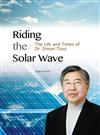
 共 2 筆 → 查價格、看圖書介紹
共 2 筆 → 查價格、看圖書介紹
